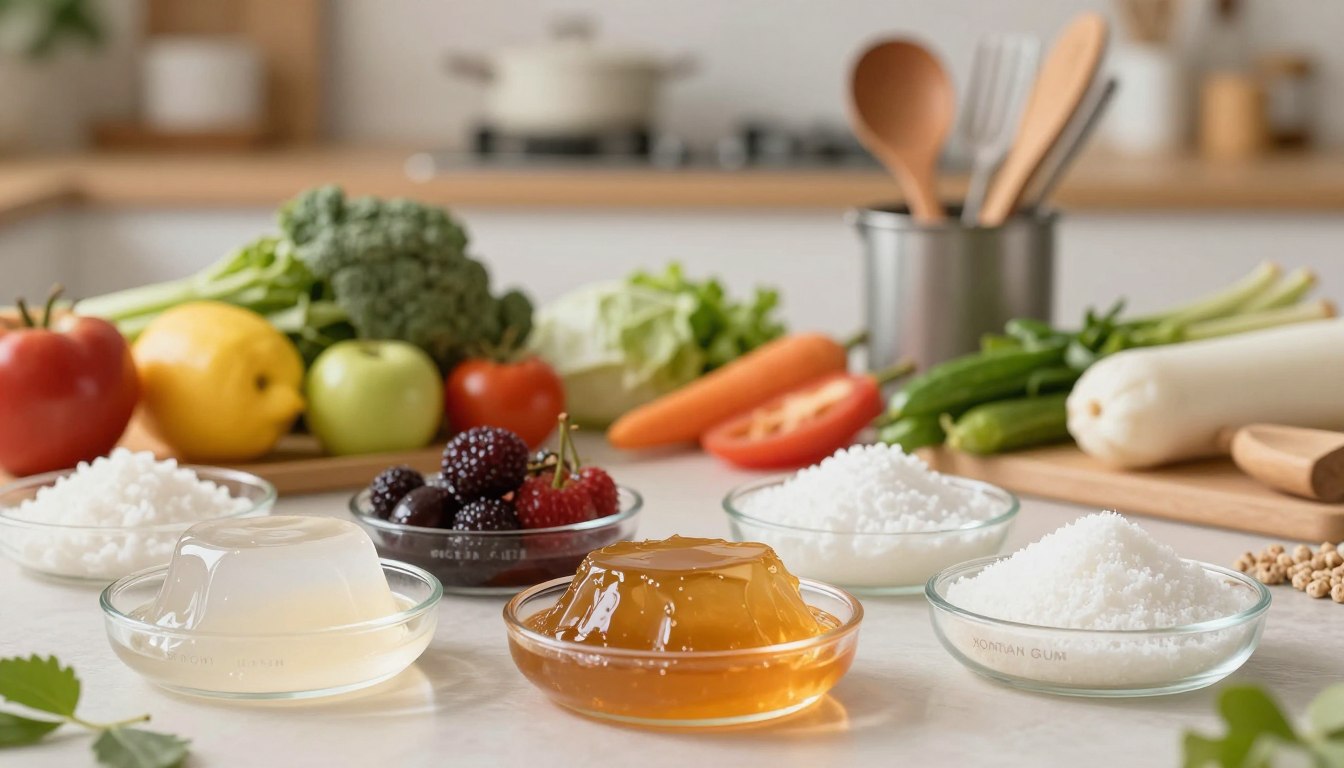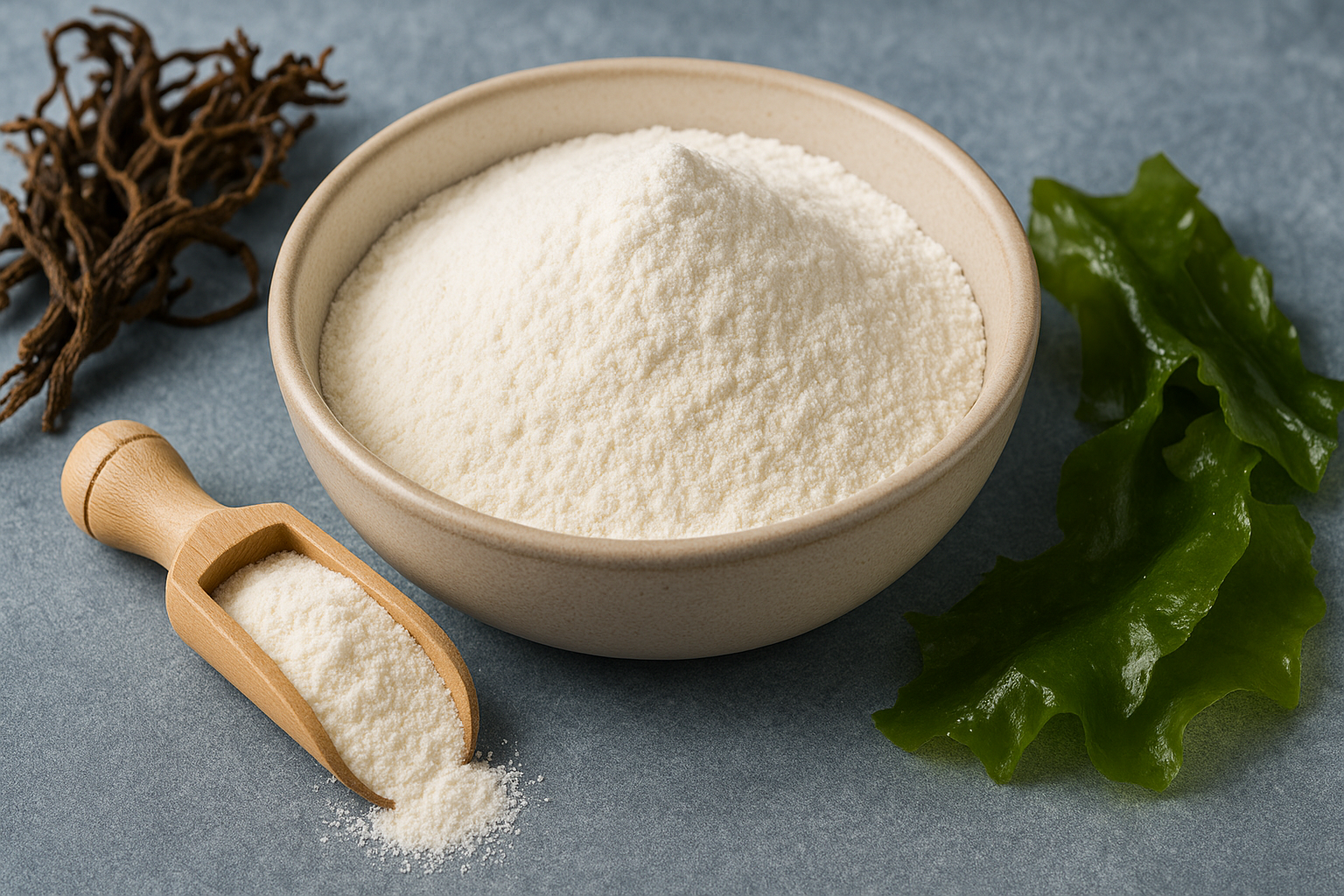Trending searches
Trending searches

Hydrocolloid: High Methoxyl (HM) Pectin
SUBSCRIBE TO OUR BLOG
Promotions, new products, and recipes.
High Methoxyl (HM) Pectin: The Plant-Derived Gelation Master
High Methoxyl (HM) Pectin, primarily sourced from citrus fruits and apples, is celebrated for its rapid gelation properties in the presence of sugar and acid. But what drives this hydrocolloid's behavior, and how has it carved its niche in the food industry?
Historical Context
HM Pectin's utilization can be traced back to traditional jam and jelly-making practices. Its commercial production and widespread use began in the early 20th century, revolutionizing the food industry.
The Molecular Science of HM Pectin
HM Pectin is a polysaccharide with a high degree of esterification. Its ability to form gels in sugary and acidic environments is attributed to its molecular structure, which promotes hydrogen bonding.
Production and Refinement
HM Pectin is extracted from citrus peels and apple pomace. The raw material undergoes a series of processes, including washing, extraction, precipitation, and drying, to yield the refined pectin.
A Multifaceted Ingredient
HM Pectin's applications are diverse:
- Food Industry: Integral in jams, jellies, confectioneries, and bakery fillings⁴.
- Pharmaceuticals: Used as a stabilizer in certain drug formulations⁵.
- Cosmetics: Incorporated for its textural properties in skincare products⁶.
HM Pectin in Culinary Creations - Proportions
HM Pectin's proportions vary based on the desired texture:
-
Jams and Jellies:
- Proportion: 0.5% to 1.5% of the total weight⁷.
- Purpose: Achieves a firm and spreadable consistency.
-
Desserts:
- Proportion: 0.2% to 1.0% of the total weight⁸.
- Purpose: Provides a smooth and stable texture.
-
Bakery Fillings:
- Proportion: 0.5% to 1.2% of the total weight⁹.
- Purpose: Ensures a stable and non-dripping filling.
Conclusion
High Methoxyl (HM) Pectin, with its exceptional gelling properties, remains a cornerstone in the food industry. Its versatility and adaptability make it an invaluable asset in various culinary applications.
See: Hydrocolloid Glossary
For further reading: Agar Agar
Sources:
¹ May, C.D. "Industrial pectins: sources, production and applications." Carbohydrate Polymers, 1990.
² Thakur, B.R., et al. "Chemistry and uses of pectin — a review." Critical Reviews in Food Science and Nutrition, 1997.
³ Williams, P.A., & Phillips, G.O. "Handbook of Hydrocolloids." Woodhead Publishing, 2009.
⁴ Rolin, C. "Commercial Pectin Preparations." Pectins and Pectinases, 1996.
⁵ Sriamornsak, P. "Chemistry of pectin and its pharmaceutical uses: A review." Silpakorn University International Journal, 2003.
⁶ Barel, A.O., et al. "Handbook of Cosmetic Science and Technology." CRC Press, 2009.
⁷ Voragen, A.G.J., et al. "Pectins and Pectinases." Elsevier, 1996.
⁸ Walter, R.H. "The Chemistry and Technology of Pectin." Academic Press, 1991.
⁹ Ridley, B.L., et al. "Pectins: structure, biosynthesis, and oligogalacturonide-related signaling." Phytochemistry, 2001.


|
About the Author Ed is the founder of Cape Crystal Brands, editor of the Beginner’s Guide to Hydrocolloids, and a passionate advocate for making food science accessible to all. Discover premium ingredients, expert resources, and free formulation tools at capecrystalbrands.com/tools. — Ed |
Related Posts

Sodium Alginate vs Other Hydrocolloids: When to Use It

Is Sodium Alginate Safe to Eat? What Food Scientists Want You to Know

Choosing the Right Carrageenan: Kappa, Iota or Lambda for Your Cooking
Enjoyed this post? Subscribe to The Crystal Scoop
Food-science tips, ingredient know-how, and recipes. No spam—unsubscribe anytime.
- Choosing a selection results in a full page refresh.
POLICY PAGES
QUICK LINKS
Guar Gum
Cape Crystal Brands, 18 Bank St., Suite 1, Summit NJ 07901.
- Phone: +1 908-273-5600
- Email: info@capecrystalbrands.com
- Tax ID: 26-2477626000
- FDA Facility Registration # 16980627550
- Kosher Certified: OKosher.org
Country/region
© 2026, Cape Crystal Brands | Sitemap
